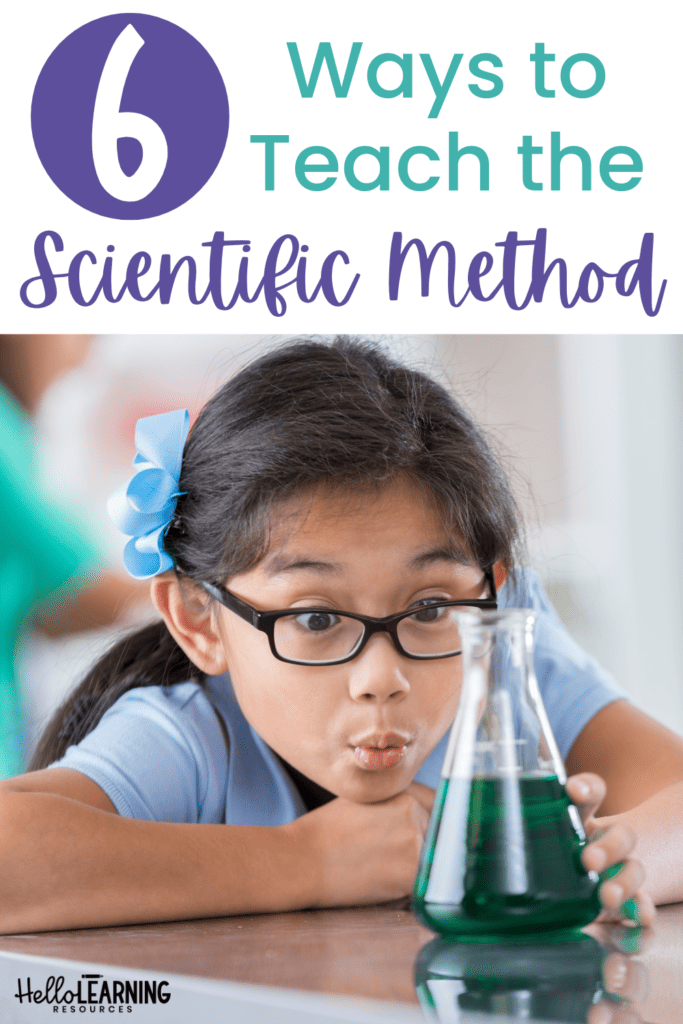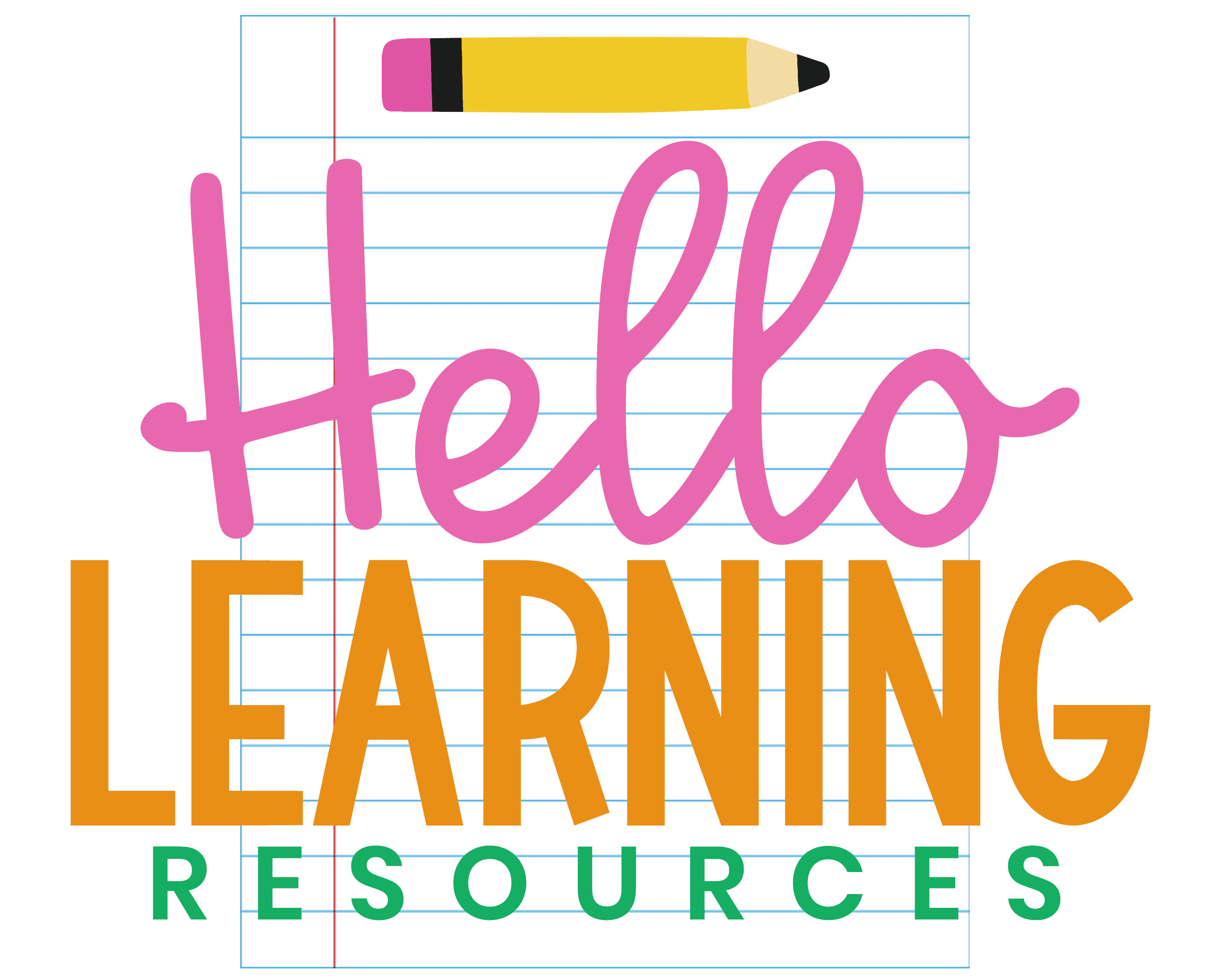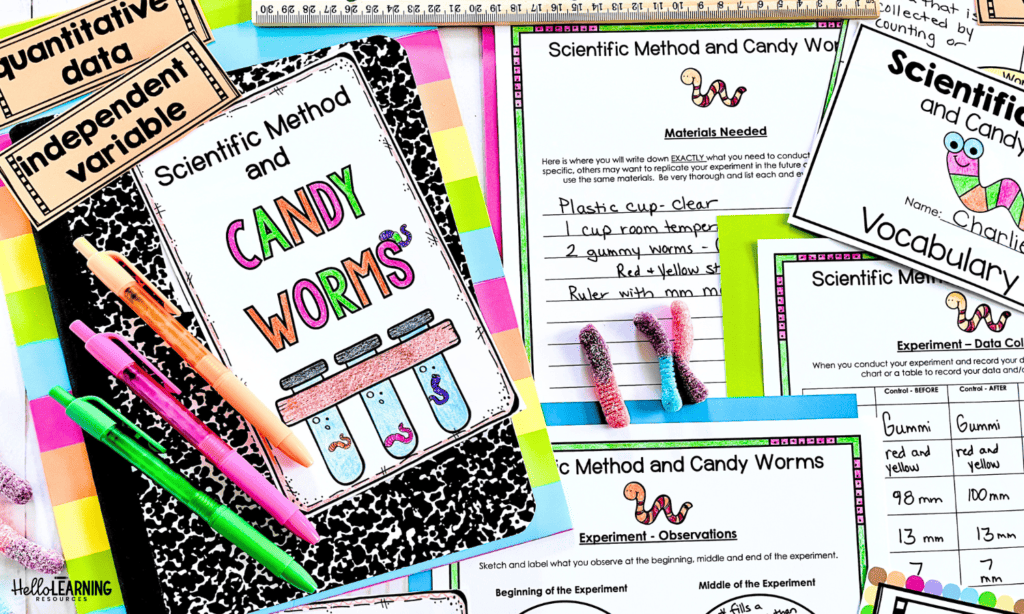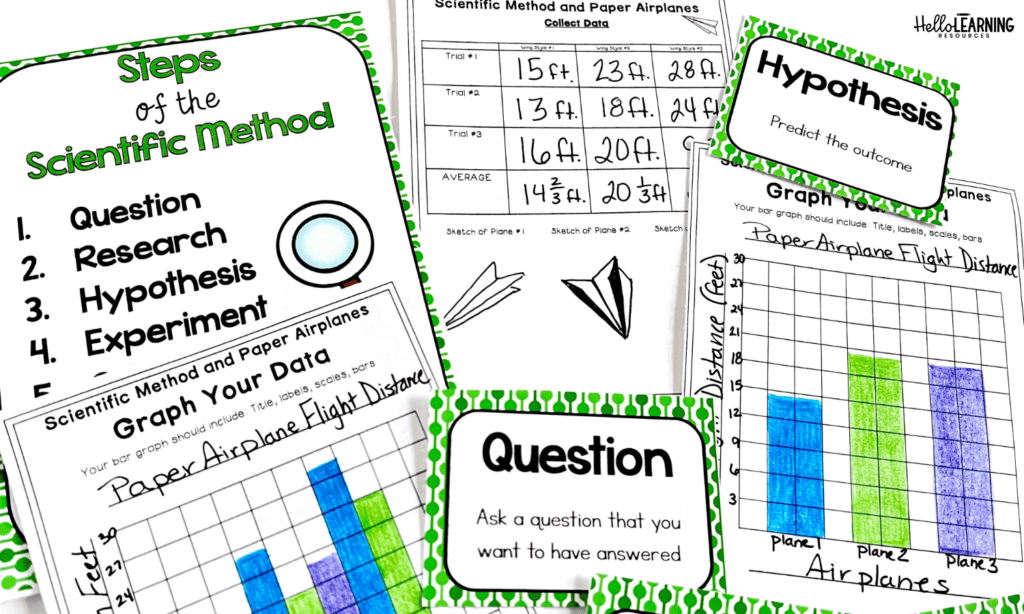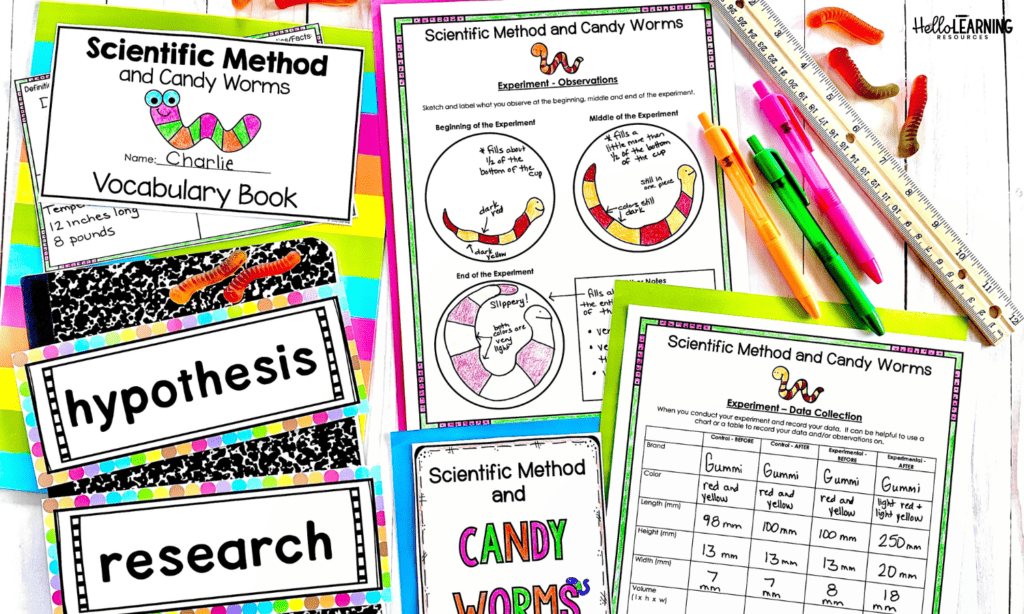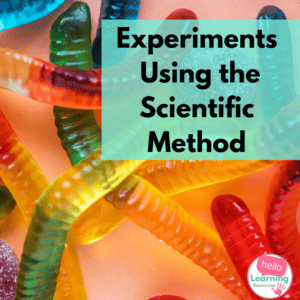6 Ways to Teach the Scientific Method
Teaching science and the scientific method can be exciting for you and your students, but let’s be honest, it can also be a bit challenging.
As teachers, we often find ourselves struggling to come up with activities and supplies to make learning the steps of the scientific method both engaging and accessible for all of our students.
In this blog post, we’re going to explore seven fantastic ways to teach the scientific method that will not only captivate your students’ curiosity but also be easy for you to plan and prep. Get ready to ignite a spark of scientific inquiry in your classroom!
Making Observations & Inferences
One of the easiest and most effective ways to introduce making observations to your elementary students is by encouraging them to use their five senses and measurement skills to make observations of everyday objects.
Whether it’s examining a vibrant plant, analyzing the texture and taste of a piece of candy, or investigating the size and shape of a shoe, these simple yet engaging activities can foster a deep understanding of the importance of making detailed observations as part of the scientific method and the scientific process.
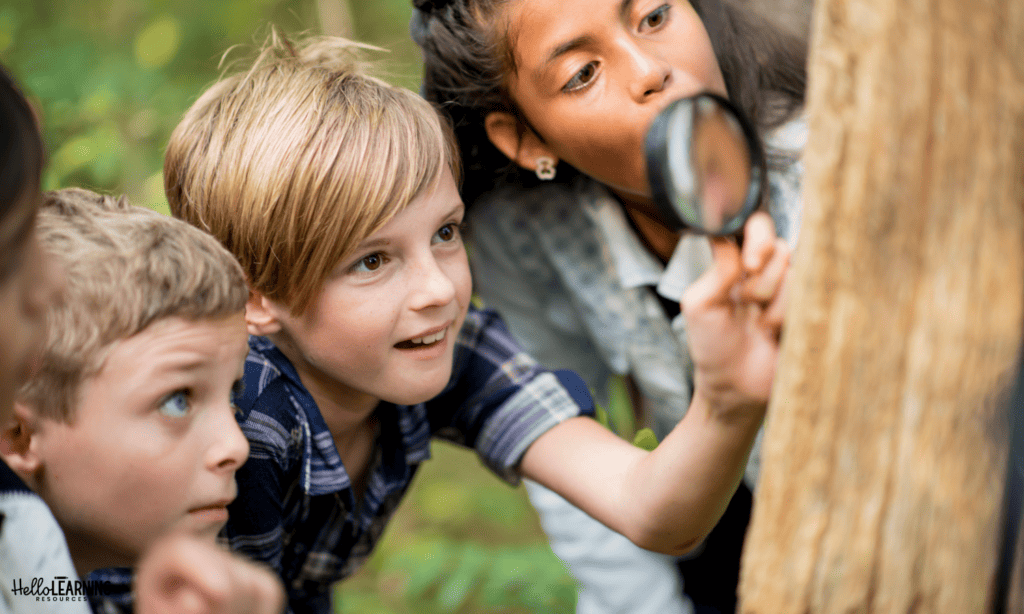
By encouraging students to observe, touch, smell, taste, and listen to these objects, they will develop a keen sense of curiosity and learn to pay attention to the intricate details that surround them.
Additionally, incorporating measurement into their observations will allow them to quantify their findings, making their observations even more accurate and meaningful.
Testable Questions
When it comes to teaching the scientific method, one crucial skill that elementary students need to develop is the ability to come up with testable questions.
To make this process engaging and relatable, why not focus on brainstorming testable questions about basic items that students are familiar with and genuinely interested in experimenting with?
Imagine the possibilities of asking questions like “Does the color of an ice cube affect how fast it melts?”, “Which wing style makes a paper airplane fly the farthest?” or “Which brand of paper towel is the most absorbent?”
Pick one item and work with your students to brainstorm as many testable questions as possible. After you go through brainstorming testable questions for one item together as a class you can challenge students to pick their own item and brainstorm a list of testable questions independently.
By encouraging students to think critically and create testable questions about everyday objects like ice cubes, paper towels, crayons, or even their favorite snacks, we not only tap into their natural curiosity but also empower them to explore and discover the scientific world that surrounds them.
Measurement Tools
Using appropriate measurement tools and making accurate measurements is an important part of any science experiment. Students will frequently use measurement tools to gather data as a part of the scientific method.
To create a hands-on understanding of measurement, it’s essential to introduce elementary students to various measurment tools like rulers, tape measures, beakers, graduated cylinders, thermometers, pan balances and scales. These tools provide invaluable opportunities for students to practice measuring volume, mass, and length.
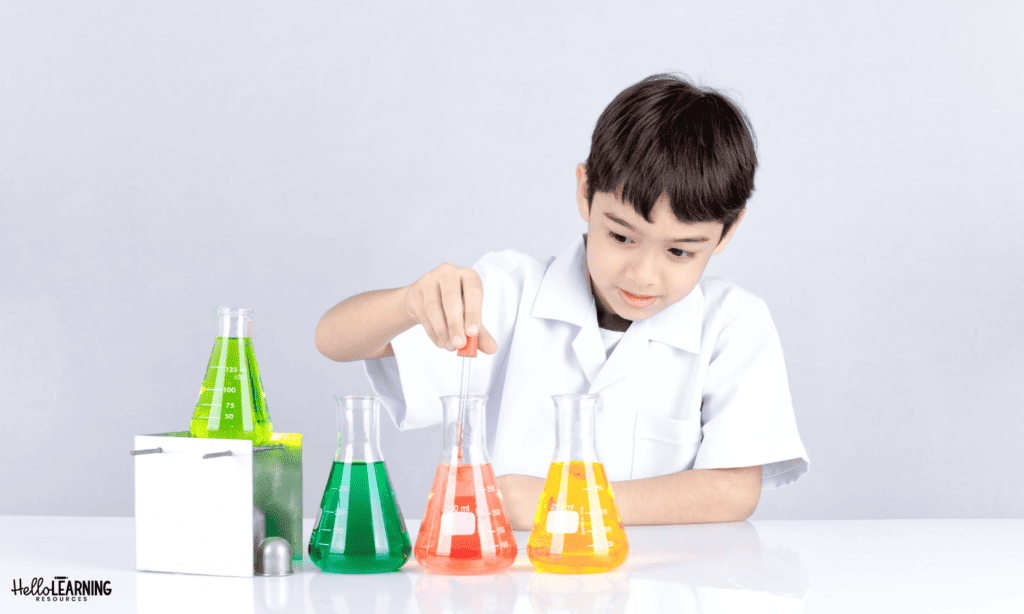
Have students measure the length of various objects using rulers or tape measures, estimate and measure the volume of water in different-sized beakers or graduated cylinders, measure the temperature of different liquids, and weigh objects on scales to determine their mass.
An engaging activity idea is the “Mystery Measurement” challenge. Give students different measurements and challenge them to find an object in the room that matches each of the measurements. For example, you might challenge them to find an object that has a mass between 5 and 10 grams, or an object that is between 6 and 8 centimeters long.
By incorporating these measurement tools into exciting activities, teachers can help their students develop a strong grasp of measurement concepts while building a sense of excitement and discovery in the classroom.
Classification Skills
Practicing classification skills is a fantastic way to sharpen critical thinking skills. Using common items like buttons, beads, leaves, or shoes, teachers can create hands-on activities that encourage students to sort and categorize objects based on specific criteria.
For instance, in a button sorting activity, students can sort buttons based on color, shape, size, or number of holes. They can explain their categories, such as “round buttons,” “buttons with two holes,” or “buttons in shades of blue.”
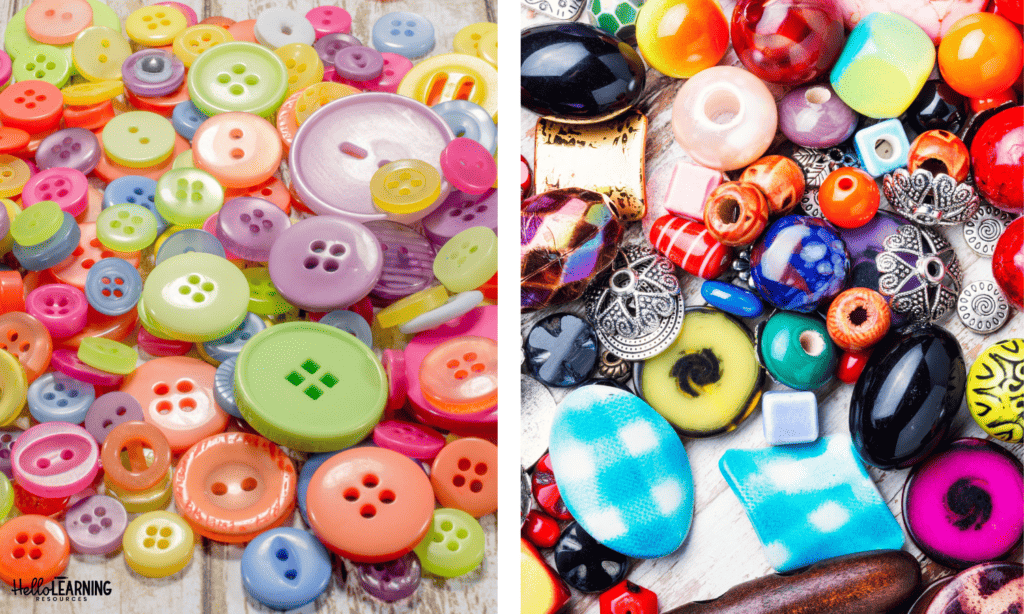
Similarly, in a leaf exploration students can sort leaves based on their shape, color, texture, or edges, and describe the categories they create, like “pointed leaves,” “leaves with serrated edges,” or “leaves with smooth texture.”
These interactive sorting exercises not only enhance students’ observational and classification skills but also encourage them to articulate their reasoning and communicate their understanding of various attributes. Being able to communicate results is an important part of the scientific method.
Scientific Method IN Mythbusters
Mythbusters is a fun show that previously aired on the Discovery Channel. In each episode, the hosts would test three different urban legends or myths to try and prove if they were really true or not.
Find a segment from this show that would be appropriate for kids to watch. (my favorite is “Balloon Chair” where they try to recreate the balloon lift scene from the movie UP). While watching the segment ou choose, watch for them to use the different steps of the scientific method and discuss how they are applied to the test they are conducting.
Many kids have seen at least one episode of this show, and the experiments they do are very engaging for students to watch and analyze for the steps of the scientific method!
scientific method experiments
Conducting hands-on science experiments in the classroom is an excellent way for students to get actively involved in each step of the scientific method.
Doing experiments following the steps of the scientific method becomes even more engaging when using kid-friendly materials that spark excitement, joy and curiosity.
Gummy worms can be the stars of an experiment investigating the effect of different liquids on their size. How will they change when submerged in water? Will they grow or shrink when put into a bowl of vinegar? The possibilities are endless, and the appeal of gummy worms is sure to capture students’ attention.
Another engaging experiment topic is paper airplanes. They provide an excellent opportunity to explore concepts such as flight and aerodynamics while following the steps of the scientific method. Students can experiment with various designs, wing shapes, or weight distribution to determine which factors make a paper airplane fly farther or stay in the air longer.
The best part? Both gummy worms and paper are easy to find and inexpensive, making these experiments accessible in any classroom.
My scientific method units experimenting with candy worms and paper airplanes are two of my best-selling resources! They include everything you need to teach the steps of the scientific method, set up and conduct an experiment and extend student learning with independent investigation ideas for testing additional variables. You can learn more about my scientific method resources and grab either of these resources in my Teachers Pay Teachers store.
Learn more about Scientific Method and Paper Airplanes HERE
Learn more about Scientific Method and Candy Worms HERE
Teaching the scientific method to elementary students can be an exciting and rewarding experience. By incorporating engaging learning activities that involve their senses, measurement tools, classification skills, and experimentation with fun materials like gummy worms and paper airplanes, we can ignite a passion for scientific inquiry within our classrooms.
The scientific method is not just a process, but a way of thinking and exploring the world around us. So let’s empower our young scientists, nurture their natural curiosity, and watch as they unlock the wonders of the scientific method, one experiment at a time!
save this post
